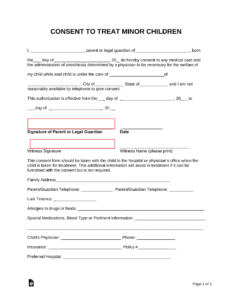An information security risk assessment policy template is a foundational tool for organizations seeking to manage and mitigate information security risks. It provides a comprehensive framework that guides the identification, analysis, and evaluation of security risks across an organization’s information assets. By following a structured process outlined in the template, organizations can systematically assess and prioritize risks, enabling them to make informed decisions regarding resource allocation and risk treatment strategies.
Creating an effective information security risk assessment policy template involves several key steps. First, the organization must establish a clear scope and objective for the assessment. This includes defining the information assets to be covered, the risk assessment methodology to be employed, and the desired outcomes. Next, the template should include a comprehensive list of potential threats and vulnerabilities that can compromise the confidentiality, integrity, and availability of information assets. These threats and vulnerabilities may arise from various sources, including internal and external factors, human error, and technological weaknesses.
Information Security Risk Assessment Policy Template Creation
Establishing the Risk Assessment Team
Assemble a diverse team of experts representing different areas of the organization, such as IT, operations, legal, and risk management. This interdisciplinary approach ensures a holistic view of risks and comprehensive assessments.
Defining Risk Assessment Scope and Objectives
Clearly outline the boundaries of the assessment, including information assets, systems, and processes to be evaluated. Specify the desired outcomes, whether regulatory compliance, improved risk management, or enhanced security posture.
Identifying Threats and Vulnerabilities
Conduct thorough research to compile an extensive list of potential threats and vulnerabilities that could compromise the confidentiality, integrity, and availability of information assets.
Selecting Risk Assessment Methodology
Choose an appropriate risk assessment methodology that aligns with the organization’s goals and resources. Common methods include qualitative, quantitative, and hybrid approaches.
Risk Assessment and Treatment
Performing Risk Assessment
Systematically evaluate the identified risks using the selected methodology. Assess the likelihood of occurrence, potential impact, and existing controls for each risk. Prioritize risks based on their overall severity.
Remediation and Mitigation Strategies
Develop and implement appropriate risk treatment strategies to address identified risks. These strategies may involve implementing new controls, enhancing existing ones, or accepting risks.
Continuous Monitoring and Review
Regularly monitor the effectiveness of implemented risk treatment strategies and the overall security posture of the organization. Conduct periodic risk assessments to account for changing threats and vulnerabilities.
Training and Awareness
Provide comprehensive security awareness training to employees, emphasizing their role in maintaining information security and reporting potential risks.
Conclusion
The information security risk assessment policy template serves as a vital tool for organizations to proactively manage and mitigate information security risks. By adopting a standardized and structured approach, organizations can effectively identify, analyze, and prioritize risks, enabling them to allocate resources and implement appropriate risk treatment strategies. The template facilitates ongoing monitoring and review, ensuring that the organization’s security posture remains robust and adaptive in the face of evolving threats and vulnerabilities.
Regularly reviewing and updating the information security risk assessment policy template based on changing circumstances and emerging threats is essential. This ongoing process ensures that the organization’s risk management practices remain effective and aligned with the latest security standards and regulations.
FAQ
What is the purpose of an information security risk assessment policy template?
An information security risk assessment policy template provides a structured approach to identifying, analyzing, and evaluating information security risks, enabling organizations to make informed decisions regarding resource allocation and risk treatment strategies.
What are the key steps involved in creating an effective information security risk assessment policy template?
Establishing a clear scope and objective, defining risk assessment methodology, identifying threats and vulnerabilities, selecting an appropriate risk assessment methodology, performing risk assessment, developing remediation and mitigation strategies, implementing continuous monitoring and review, and providing training and awareness.
How does an information security risk assessment policy template contribute to an organization’s security posture?
An information security risk assessment policy template helps organizations proactively manage and mitigate information security risks. By identifying, analyzing, and prioritizing risks, organizations can allocate resources and implement appropriate risk treatment strategies, enhancing their overall security posture.

